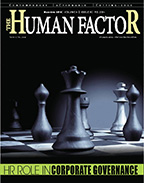ASHISH KUMAR CHIEF HR OFFICER, PVR LTD. Quest for the right person Ashish Kumar (Chief HR Officer, PVR Ltd.) says recruitment is about finding potential candidates for a job, while selection is about selecting the right person for the right job Issue Date - 01/03/2013 |
 Q. What is your recruitment strategy? How is it different from others? Q. What is your recruitment strategy? How is it different from others?A. Talent acquisition is among the most crucial tasks of human resource professionals. A successful recruitment strategy should be well planned and practical to attract good talent. Our recruitment strategy mainly covers the following areas: Identifying and prioritising jobs: Requirements keep arising at various levels simultaneously, so it is impossible to fill all the positions immediately. Therefore, there is a need to identify the positions that require immediate attention and action. Candidates to target: The recruitment process can be effective only if the recruiter completely understands the requirements of candidates. Sources of recruitment: Two main sources of recruitment are: internal and external recruitment. We strongly use our employee referral scheme to fill our maximum vacancies, followed by job portals. The senior positions are given on retainership basis. Evaluating candidates: The various parameters to judge them should be planned in advance like a written test, technical knowledge, interviews, HR and behavioural interviews. Q. There are three types of recruitment needs: planned, anticipated and unexpected. Which has been most effective for you? A. A well-planned recruitment strategy is always effective. It gives plenty of time for proper consideration of factors like number of requirements, budget, source of hiring, skill sets and industry preference. We restrain from hurriedly filling up any open position. Q. What are the current trends in recruitment and how is recruitment related to selection? A. The latest trends in recruitment are: job portals, employee references, mapping, headhunting, consultancies, e-communities, job postings on sites, mass mailings, and internal database. These trends are not only cost effective but also save time and resource. Recruitment and selection are the backbone of an effective and productive human capital for any organisation. Recruitment is the process of finding potential candidates for a job, while selection is the process of selecting the right person for the right job. Q. How do you determine the present and future requirements, in terms of talent pool? A. Manpower planning is directly proportional to the corporate objectives. In every organisation, there are organisational objectives and departmental objectives. To meet the objectives, business heads need to align business goals to the future business strategy or AOP (Annual Operating Plan) and share it with HR to attain those objectives. |
 Q. What are the major costs incurred in selection and recruitment and what do you do to cut down the costs? Q. What are the major costs incurred in selection and recruitment and what do you do to cut down the costs?A. The major costs incurred during the recruitment process include: 1 Consultant charges 2 Travel charges 3 Relocation expenses. 4 Retainership fees for vendors 5 Cost on job portals 6 Cost on posters and banners 7 Cost on promotions The idea is to keep the workforce happy so that they do not leave for better opportunities. Q. Is there any strategy to ensure that disadvantaged candidates do not face any discrimination in job selection? A. Equal opportunity policy should be introduced to ensure that there is no discrimination in recruitment and selection on the grounds of age, disability and gender. Equality legislation must be promoted to avoid discrimination. Q. What are the advantages and disadvantages of internal recruiting over external recruiting? A. Internal recruitment definitely is a priority because current employees have better understanding of business, culture and the environment compared to outsiders. It can build strong loyalty with the organisation as employees are not pressed to look for opportunities in the external job market. Also, internal recruitment can be cost-effective. However, it does not bring new skills and competencies to the organisation. Q. An ethnically diverse workforce enhances creativity and facilitates expansion into global markets. Do you agree? A. I agree. Companies operating globally know they have to eradicate discrimination to bring positive climate in the organisation. Companies can acquire knowledge and perspectives and thereby increase their competitive strength. Leadership and management must cultivate a working climate in which it is acceptable for people from diverse background to contribute their ideas and share their best practices. |
Syed Zafar Mehdi
|
|
|



